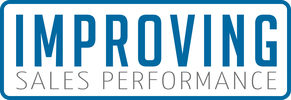|
New trends in virtual meetings have given rise to sales tech challenges for many teams. In March 2020, Zoom saw more than 20 million new users download their mobile app. While the Work From Home (WFH) business model has been gaining traction for years, the current socio-political climate radically sped up the advent of technology like video conferencing. At the height of the Coronavirus pandemic, more than 300 million people participate in Zoom meetings every day. Add that to the immense number of people who use rival services such as Google Hangouts/ Meet, and you have a major shift in global business practices.
That level of explosive growth isn't without problems, though. With so many first-time users adopting this new technology, things are bound to go wrong. Tech issues and sales meeting challenges are likely to arise. Here are five sales tech challenges that I see my clients struggle with every week, along with instructions on how to solve them. 1. Attendees Click the Wrong Meeting Link Google's entire suite of products is built on user experience. They have led the renaissance of easy-to-use applications that integrate seamlessly with one another. For the most part, it makes life much easier for the end user. Sometimes, Google's quality-of-life updates can be intrusive, and create a sales tech challenges. Businesses hosted through Gmail who choose to integrate with an enterprise platform like Outlook are subject to Google Meet/Hangout links where they might not want them. Google automatically embeds a link to their Meet/Hangout application in email and Google's calendar. Meet was formerly known as Google Hangouts, but over the summer of 2020, Gmail was upgraded to include additional video conferencing functionality, and thus Meet was born. Because Google automatically injects the embedded link into emails for enterprise users, people who you've invited to your Zoom sales meeting might be confused. Instead of clicking the Zoom link in their email, they click the embedded Meet/Hangout link instead. This link correlates to your Google calendar and is dependent on it. No matter how clear you make it in the body of the email, there will still be clients that click the embedded link anyway. Fortunately there is a fix. It requires your business's Gmail administrator to adjust a setting in your Google calendar to prevent Google from automatically embedding the link across your G Suite. If your business is smaller in scale and you aren't using an enterprise account, you can turn this feature off yourself by going into your calendar settings and turning off the "Automatically add Google Meet video conferences to events I create" option in your calendar. 2. Zoom Only Allows the Host to Share Their Screen Being able to share what's on your screen is an important part of a virtual sales meeting. To implement a truly functional WFH model, your video conferencing platform has to foster productivity. By default, Zoom only allows the sales meeting's host to share what's on his/her device screen, however. This information can include:
Fortunately, there is an extremely easy fix to this sales tech challenge, allowing everyone in the meeting to share screen content. To allow multiple users to share the contents of their screen, the meeting host must click the up arrow icon on the right side of the screen. This will open a menu where the host can select the "Multiple participants can share simultaneously," option. It should be noted that this is a change to the default option, which is set up so that only the host can share. Clicking a simple radio button located below the previous option allows the meeting attendees to share their content as well. 3. Time Zone Confusion Creates Sales Tech Challenges Large, multinational companies may have sales meetings that involve participants from all over the globe. That means participants operating out of different time zones. For some users, time zone conversion can be a painful, time-consuming process that involves consulting an outside source and then doing the math manually. For default Google users, it involves setting up a secondary time zone for each invite that has international attendees. That's where plugins come into play. Plugin calendar apps like Calendly or Acuity integrate easily with your G Suite, and provide valuable time zone information for your sales meetings by default. These extensions allow for easier time zone access, such as rolling over an attendee's name to show information, including time zone. For example, with Acuity integration, you simply click on the appointment in your Google calendar to see each attendee's time zone. The initial time investment that it takes to set up plugins like these are more than worth it given their overall convenience and effectiveness at solving this sales tech challenge. 4. Solve Tech Issues by Enabling Advanced Functionality Tools Add-ons like Calendly greatly augment what you're able to do with your video conferencing platform, helping you overcome multiple sales tech challenges at once. The basic version of Calendly includes free meeting scheduling functions, while their premium service allows users to do much more. Using Calendly's advanced features allows hosts to embed a link right on their website that allows potential clients to set up a meeting without having to go through an additional platform to initiate contact. Calendly also allows you to set up PayPal or Stripe payment options within the video conference itself, allowing for functional, results-driven sales meetings. Each new meeting type that the host sets up will walk them through a checklist of options for their prospective meeting, allowing them to easily initiate advanced features like these. 5. Make Video Conferencing More Secure Users worldwide have made a big deal out of the potential security issues inherent to free-to-use platforms like Zoom, and with good reason. Those security threats have introduced a new term into our collective vernacular: Zoombombing. Sales people deal with sensitive information on a regular basis. The integrity of our customers' information and our internal communications is essential. Video conferencing, however, has become a modern-day necessity. What can users do to overcome this specific sales tech challenge? While both Google and Zoom have added additional layers of encryption over the last few months, as well as unique meeting invite codes, Zoom users have a frontline defense they can proactively employ. Before starting a meeting, users can log in and access their settings. Under advanced options there is a setting to enable a virtual waiting room. This allows the meeting's host to pre-screen people attempting to join the meeting. Iron Out the Kinks As with any new technology, there are millions of unanticipated issues that will inevitably arise. With the WFH business model, sales people worldwide are experiencing a major operational shift that will affect the industry as a whole. Experience is the best teacher available, even as we all try to figure out sales tech challenges together. Fortunately, each of the video conferencing platforms currently on the market are customizable, designed with the end user in mind. For more tips, tricks and insights on videoconferencing and the evolving sales environment, sign up for our newsletter, or visit our website for webinars and other valuable business resources. |
Meet Me
Archives
April 2024
Categories
All
|
|
We are headquartered in Colorado with domestic and international teammates and clients. Please use the contact form on this page to inquire about any of our books, podcasts appearances, speaking engagements and workshops, any of our offerings, or simply to connect.
|
© Improving Sales Performance. All Rights Reserved.



 RSS Feed
RSS Feed
